Discover 20 hidden attractions, cool sights, and unusual things to do in Andover (United States). Don't miss out on these must-see attractions: Addison Gallery of American Art, J. Everett Collins Center for the Performing Arts, and Robert S. Peabody Museum of Archaeology. Also, be sure to include Andover Town Hall in your itinerary.
Below, you can find the list of the most amazing places you should visit in Andover (Massachusetts).
Table of Contents
Addison Gallery of American Art
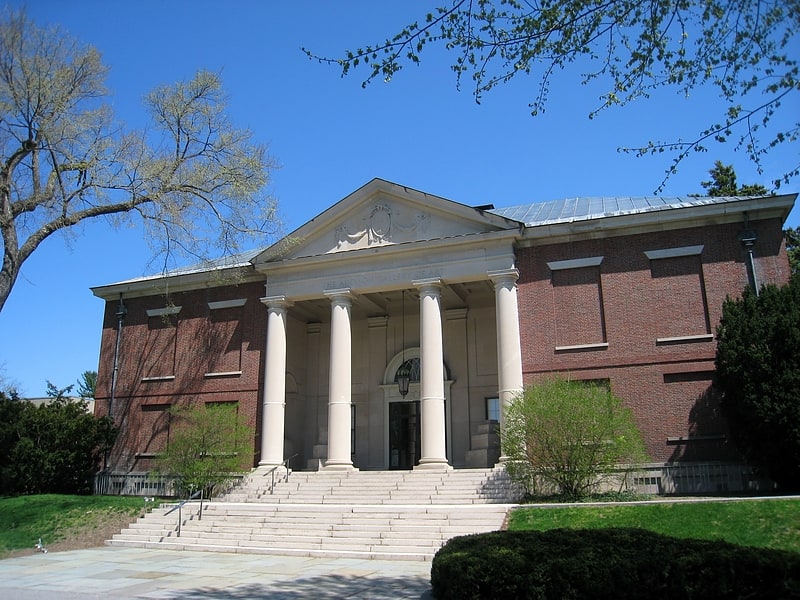
Museum in Andover, Massachusetts. The Addison Gallery of American Art is an academic museum dedicated to collecting American art, organized as a department of Phillips Academy in Andover, Massachusetts.[1]
Address: 180 Main St, 01810-4166 Andover (Andover)
J. Everett Collins Center for the Performing Arts
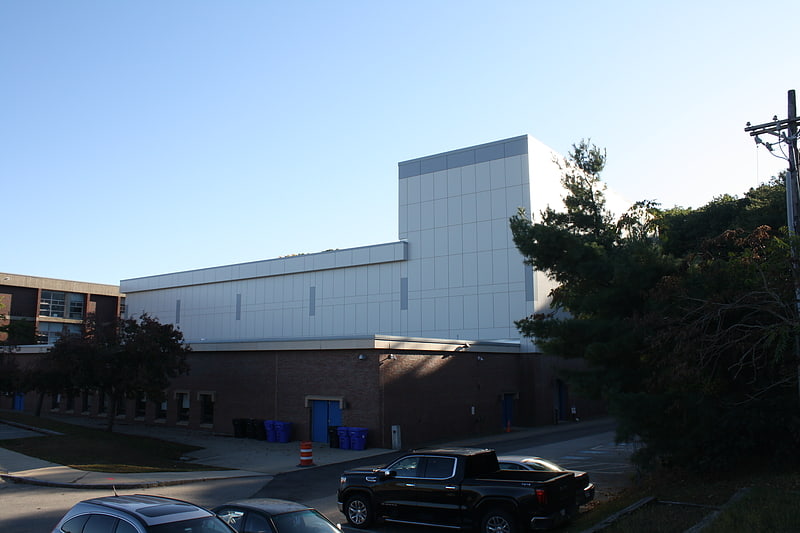
Performing arts theater in Andover, Massachusetts. The J. Everett Collins Center for the Performing Arts is a 1,203 seat, publicly owned theatre in Andover, Massachusetts which functions as both a venue for municipal functions and a facility for private rentals. Auditorium space is used for Andover's annual town meetings and functions as an auditorium for Andover High School, connected to its southeast side. The Collins Center houses offices, facilities and classrooms for the school's drama guild, vocal ensembles, orchestra and band. Paying homage to John Everett Collins, the theatre was named after the Andover musician and politician for his service to the community. Once managed by the Andover Endowment for the Arts, Inc. an operations director now acts as manager on behalf of the town for event scheduling.[2]
Address: 100 Shawsheen Road, Andover (Andover)
Robert S. Peabody Museum of Archaeology
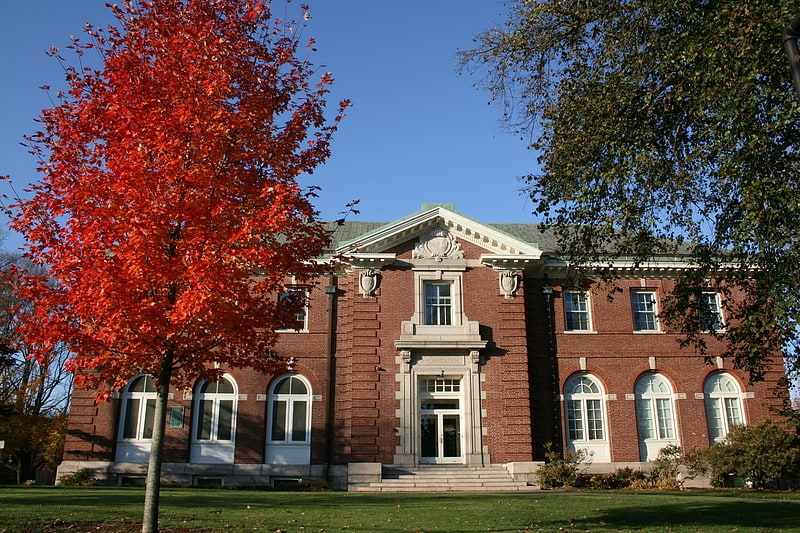
Museum in Andover, Massachusetts. The Robert S. Peabody Institute of Archaeology, formerly known as the Robert S. Peabody Museum of Archaeology, is a learning center and archaeological collection in Andover, Massachusetts. Founded in 1901 through a bequest from Robert Singleton Peabody, an 1857 Phillips Academy alumnus, the institute initially held the archaeological materials collected by Peabody from Native American cultures. Peabody's passionate interest in archaeology led him to create the institute at Phillips Academy to encourage young people's interest in the sciences, and to foster respect and appreciation for the Native American peoples who have inhabited that hemisphere for thousands of years.
The Peabody's major collections include artifacts and material from the Southwest, Northeast, Midwest, Mexico, Southeast and the Arctic. The date range represented by these collections spans from Paleo Indian (10,000+ years ago) to the present day.[3]
Address: 175 Main St, 01810 Andover (Andover)
Andover Town Hall
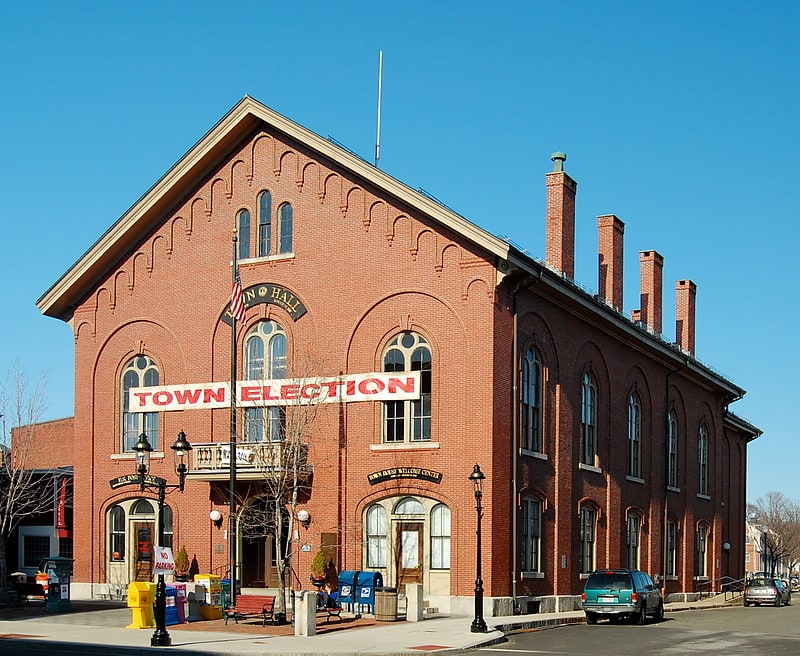
Building in Andover, Massachusetts. Andover Town Hall is the historic town hall of Andover, Massachusetts. It is located at 20 Main Street, between Park and Barnard Streets. The 2+1⁄2 story Romanesque Revival red brick building was constructed in 1858, not long after the separation of North Andover. It was designed by Boston architect Theodore Voelkers and built by local builders Abbott & Clement. The building design echoed that of the mills that dotted the town. It was listed on the National Register of Historic Places in 1982.[4]
Address: 20 Main St, 01810 Andover (Andover)
Central Street District
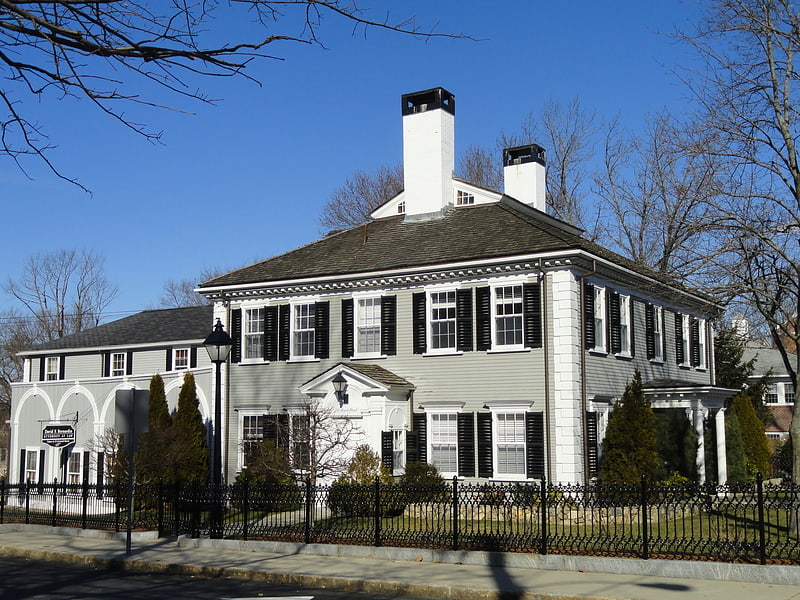
Historical place in Andover, Massachusetts. The Central Street District is a historic district encompassing the traditional heart of Andover, Massachusetts prior to the development in the later 19th century of the current town center. It consists mainly of residential and religious properties along Central Street, from Phillips Street in the south to Essex Street in the north. All of the listed properties have frontage on Central Street, even if their addresses are on one of the adjacent streets.
By the late 18th century, Central Street was already an important thoroughfare, connecting Boston and Salem to Haverhill and the traditional center of Andover, now North Andover. The South Church, the first church of present-day Andover, was built along the road in 1709. The current building is a Romanesque Revival structure, built in 1861. The architectural styles of the houses in the district represent a cross section of styles from Federal to Colonial Revival, with none in particular predominating. The houses are generally of high quality construction, and represent their architectural styles well.
In addition to the South Church, the district has two other churches. The oldest of the three is the brick Greek Revival First Baptist Church, built in 1834 by locally noted builder Jacob Chickering. The youngest is the Methodist Church building, a fine Richardsonian Romanesque structure designed by Hartwell and Richardson for a congregation established in 1835.
The district was listed on the National Register of Historic Places in 1982.[5]
Haggetts Pond
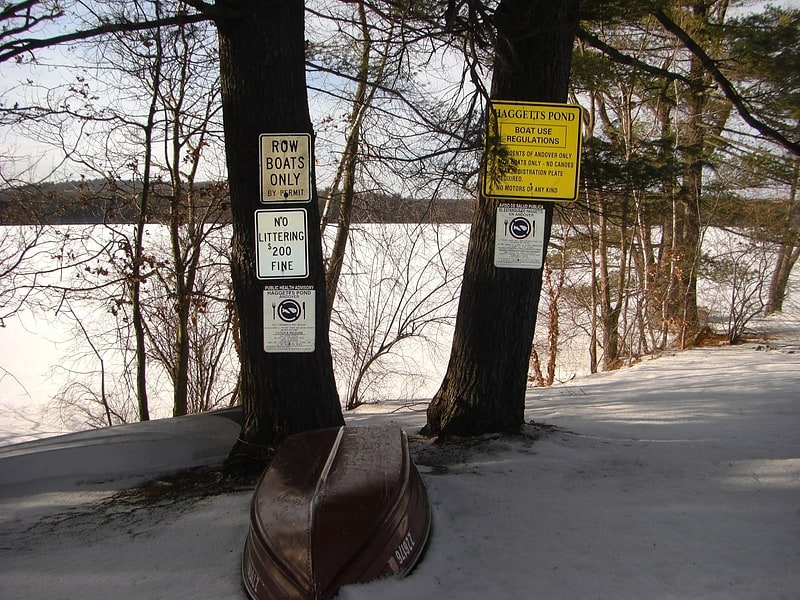
Reservoir in Massachusetts. Haggetts Pond is the reservoir for the town of Andover, Massachusetts, United States. It is located in the western part of the town and also lends its name to a road. The Merrimack River is connected to the pond to add volume to the reservoir.
It is bordered by Route 133 on the south. Not far to the northwest is Interstate 495; to the northeast is Interstate 93. Haggetts Pond is located at 42°38′36″N 71°12′18″W.
Permissible activities include walking, hiking, jogging biking and fishing. Only registered rowboats are allowed on the reservoir and fishing must be done from either the shoreline or a rowboat (no hip waders). Canoeing or kayaking, windsurfing, sailing, ice skating and ice fishing are prohibited. Swimming, bathing, wading and pets in the water are also prohibited.
Hiking trails, some converted out of a former railway (the Lowell and Lawrence Railroad), encircle the pond.
The Pond also gives its name to a road (Haggetts Pond Road) that starts to the west of the pond itself. Haggetts Pond Road transverses Route 133, but the vast majority of its length is on the side north of the pond. (Of the 245 houses on Haggetts Pond Road, 240 of them are on the north side.)[6]
Memorial Hall Library
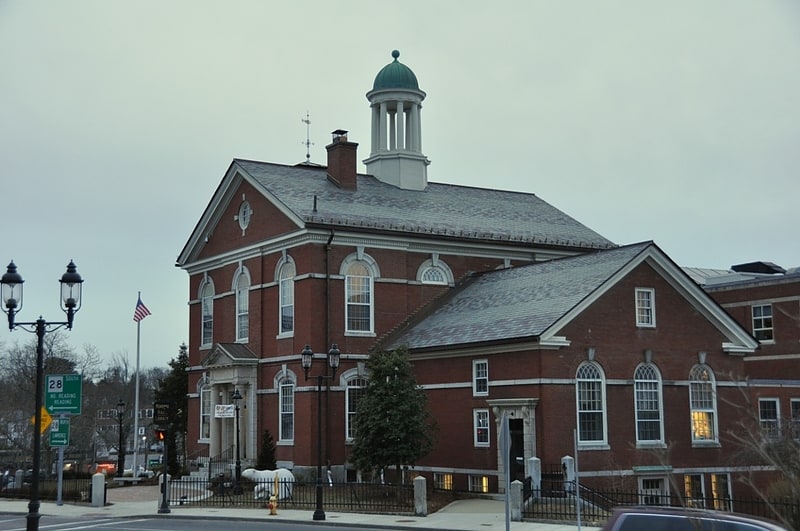
Public library in Andover, Massachusetts. Memorial Hall Library is the public library of Andover, Massachusetts. The building was built with Italianate styling in 1873 to a design by J. F. Eaton. Funding was provided by a number of leading local businessmen, and construction was by the firm of Abbott & Jenkins. It was designed to house the town library, which it still does, and to act as a memorial to the town's Civil War soldiers. It was renovated in the 1920s under the direction of Sheply, Bulfinch, Richardson, and Abbot, at which time it acquired its Colonial Revival details.
The building was listed on the National Register of Historic Places in 1982.[7]
Address: 2 N Main St, 01810 Andover (Andover)
Musgrove Block
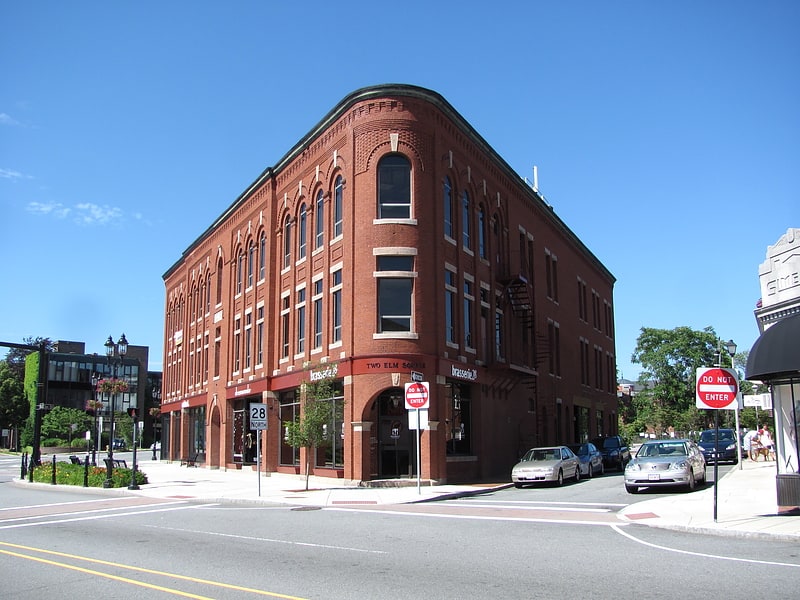
Building in Andover, Massachusetts. The Musgrove Block is a historic commercial building at 2 Main Street in the center of Andover, Massachusetts. The three story brick building was built in 1895 on the site of a former town green, and forms part of Andover's central Elm Square intersection. The building exhibits Romanesque Revival styling, featuring granite trim elements and ornate brick detailing. It was listed on the National Register of Historic Places in 1982.[8]
Holt Farm
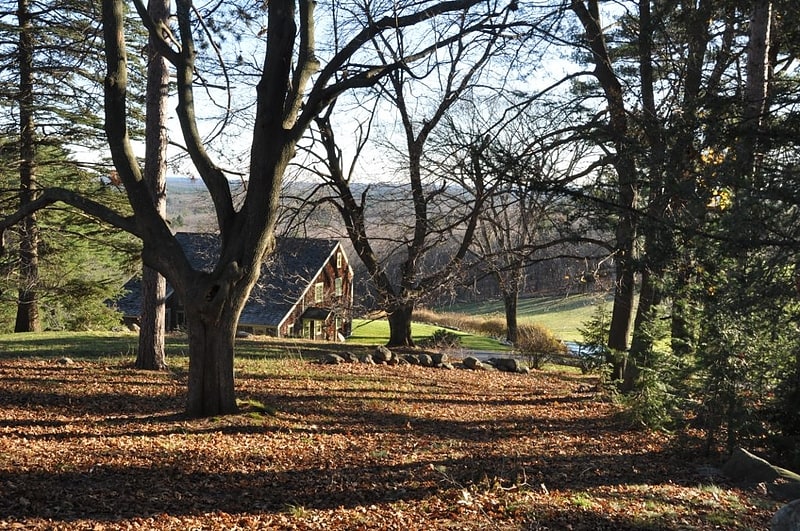
Holt Farm is a historic farm built in 1714 by Nicholas Holt's grandson Timothy Holt and located at 89 Prospect Road in Andover, Massachusetts. The house was built on the highest point in Essex County on land granted in Nicholas Holt. In Colonial times the Hill was referred to as Holt Hill but was changed in the late 19th century to Prospect Hill, but reverted to its original name in the early 20th century..6ed.
The first Holt in Andover was Nicholas Holt (1), an early officer of the town, who was a tanner who also ran the ferry across the Shawsheen River. Nicholas Holt's (1) grandson Timothy Holt (3) built his house on the land granted to his father James Holt (2) who was granted the original 100 acres from his father, Nicholas (1). Despite some evidence that Nicholas himself was barely literate, his descendants became known for their academic accomplishments with a long line of ministers and teachers.
Early settlers of Andover, some the Holts, who settled on the "Stoney Plaine", west of Holt Hill, lived near Scotsman Robert Russell (1) 1630–1710. in the part of Andover long known as the 'Scotland District.
Holt Hill and its environs are actually in the Holt District, and named for the local school houses in each neighborhood. Russell, the first person to be interred in the newly designated South Parish burying ground in 1710, had ten children, three of whom married Holts from nearby Holt Farm.
Much of the original Holt Farm now forms portions of the Ward Reservation and is owned by The Trustees of Reservations as a public park.[9]
Andover National Bank
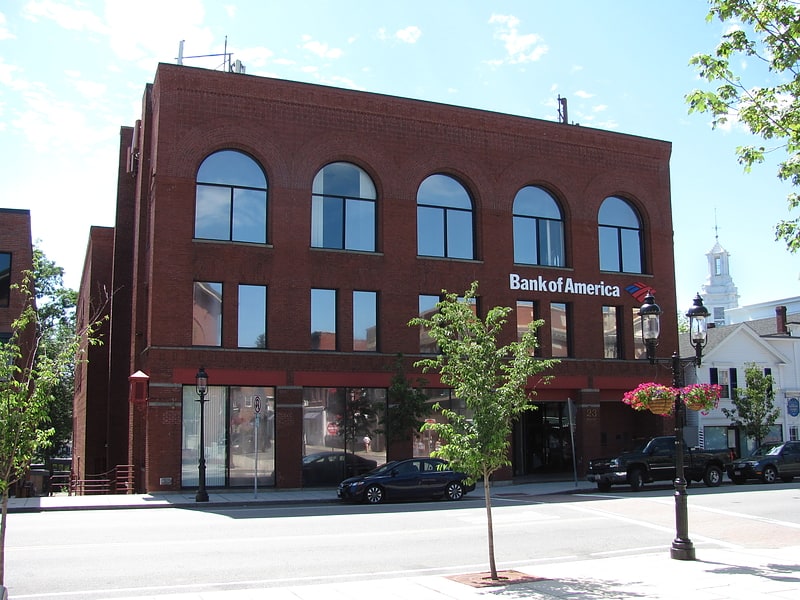
Building in Andover, Massachusetts. The Andover National Bank building is a historic bank building at 23 Main Street in Andover, Massachusetts. The brick Romanesque Revival building occupies a prominent place in Andover center, opposite the town hall. It was designed by Hartwell and Richardson and built by the local firm of Hardy and Cole. It was completed in 1890. Its first tenants, in addition to the bank, were the Andover Savings Bank, local offices of the Merrimack Fire Insurance Company, and the local Masonic lodge.
The building was listed on the National Register of Historic Places in 1982.[10]
Jehiel Cochran House
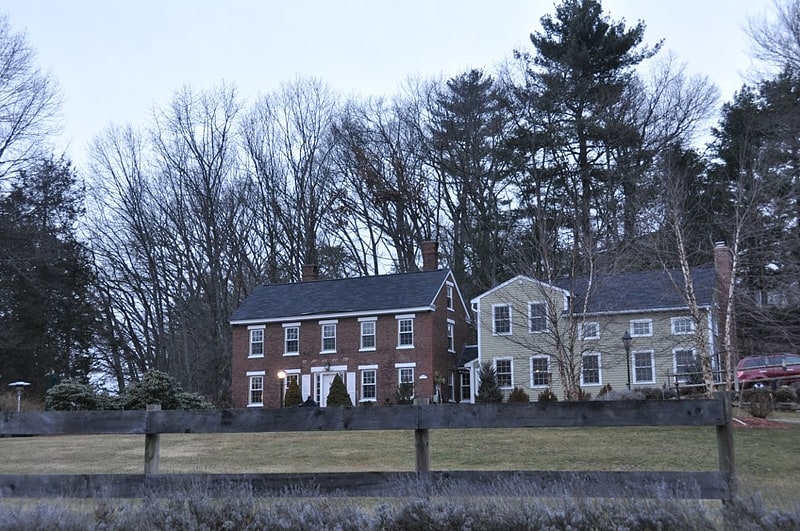
The Jehiel Cochran House is a historic house at 65 Burnham Road in Andover, Massachusetts. It is listed on the National Register of Historic Places and Massachusetts cultural inventory records at 63 Burnham Road, but by the Andover Historical Society at 65 Burnham Road. The house, built in the 1830s, is locally distinctive for its use of brick, and for its association with the Jehiel Cochran, the brickyard owner who built it. It was listed on the National Register in 1982.[11]
Benjamin Abbot House
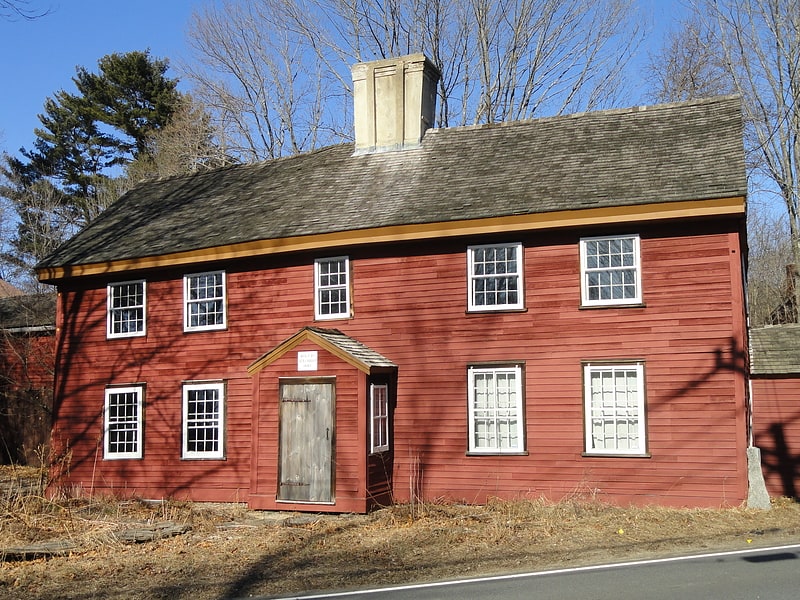
The Benjamin Abbot House or Abbot Homestead is a historic house at 9 Andover Street in Andover, Massachusetts, USA. The house was built in 1711, and is one of the oldest in Andover. It was listed on the National Register of Historic Places in 1975.[12]
Barnard Block
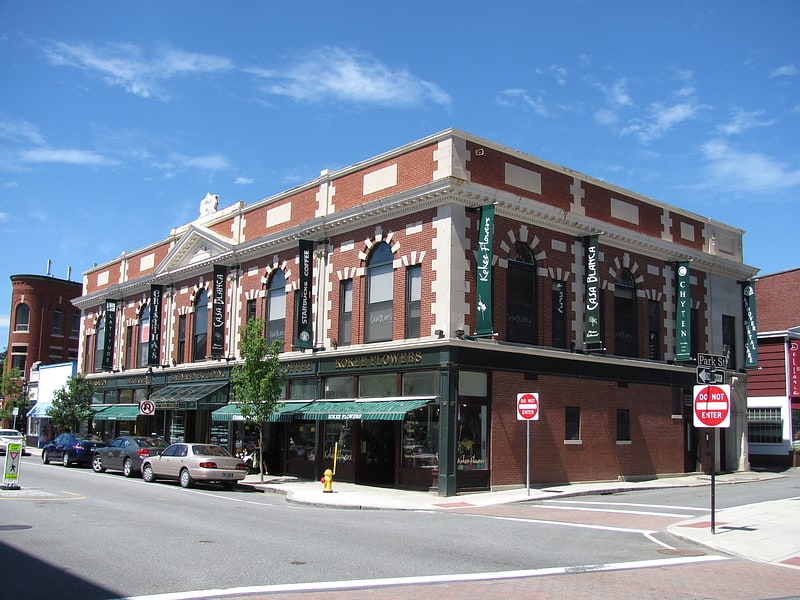
Building in Andover, Massachusetts. The Barnard Block is a historic commercial block at 10-16 Main Street in the center of Andover, Massachusetts. The two story brick and stone building was built in 1910 for Henry Barnard, son and business partner of Jacob W. Barnard, a successful local shoemaker. This building was one of a number of family investments. It features elaborate Colonial Revival detailing, include creative use of multicolored stonework, Palladian windows, and a central triangular pediment on the Main Street facade.
The building was listed on the National Register of Historic Places in 1982.[13]
J. T. Abbot House
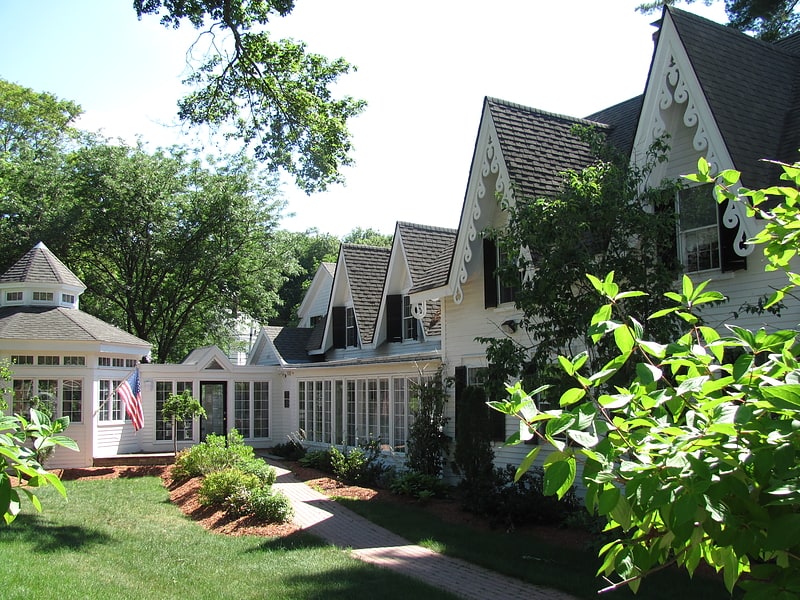
The J. T. Abbot House is a historic house at 34 Essex Street in Andover, Massachusetts. The Gothic Revival house was built in the late 1840s for Joseph Thompson Abbot by Jacob Chickering, a leading local real estate developer and builder of the mid 19th century. The ornamental detailing is among the most elaborate of the time in the town. The house was listed on the National Register of Historic Places in 1982.[14]
Abiel Pearson House
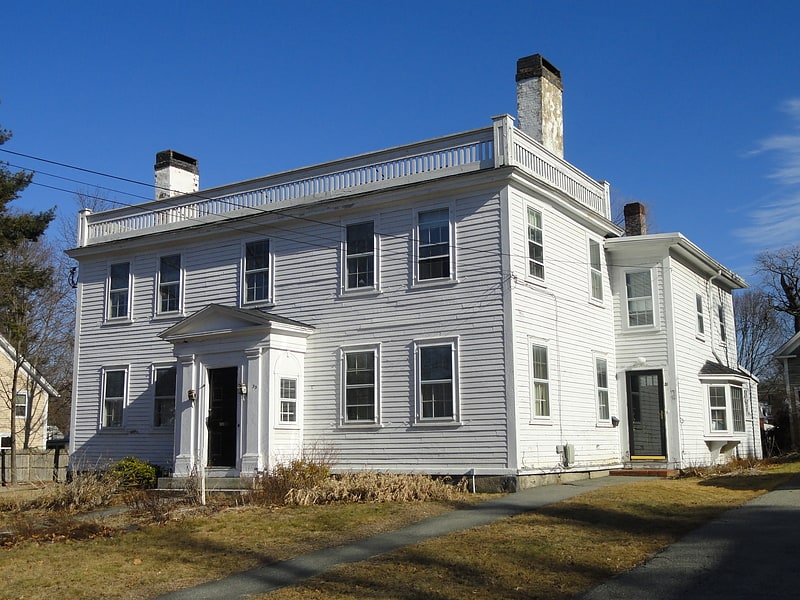
Building in Andover, Massachusetts. The Abiel Pearson House is a historic house in Andover, Massachusetts. This Federal style two story house was built c. 1807 for Doctor Abiel Pearson, originally from Byfield, Massachusetts, at the start of High Street near the town center. It was purchased in 1829, two years after Pearson's death by Benjamin Punchard, who lived in the house until 1846. Punchard moved the house to its present location in order to build a new house at the same location. This house he divided into a two family and rented out. The house was sold to John Harding after Punchard's death in 1852, and remained in the hands of his descendants until 1935. The house features elegant Federal details, agreeably extended with a Greek Revival roof balustrade. The house was listed on the National Register of Historic Places in 1982.[15]
Chickering House
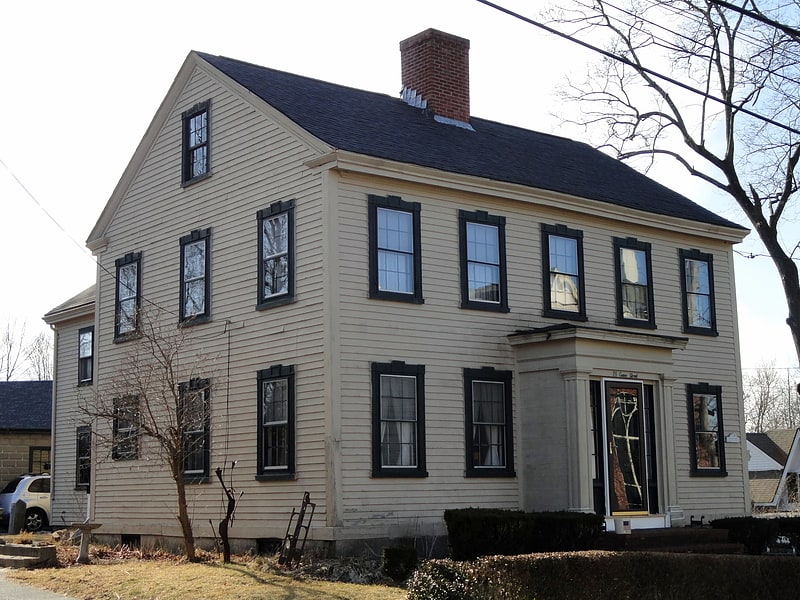
The Chickering House is a historic house at 28 Essex Street in Andover, Massachusetts. It was built by local builder Jacob Chickering as his personal residence sometime in the early 1830s. He only lived in it until 1835, when he moved across the street, giving this house to his parents. Chickering was a noted builder in Andover until about 1856, when he became involved in the piano manufacturing business.
The house is a 2+1⁄2-story colonial with late Federal and Greek Revival styling. It has a projecting center entrance with sidelights, and particularly well executed corner and center blocks on its windows. The house was added to the National Register of Historic Places in 1982.[16]
Benjamin Punchard House

The Benjamin Punchard House is a historic house in Andover, Massachusetts. Located in the center of Andover, it now houses a bank. The house was built in 1846 by Benjamin Punchard, a successful merchant and shopkeeper. Punchard built the house on the site of a Federal style house he had previously occupied, which was moved to 33 High Street, and is known as the Abiel Pearson House. The house he designed has a number of distinctive characteristics, include a number of early Italianate details. Punchard died a wealthy man, and the town's high school was named for him.[17]
Nathan Frye House
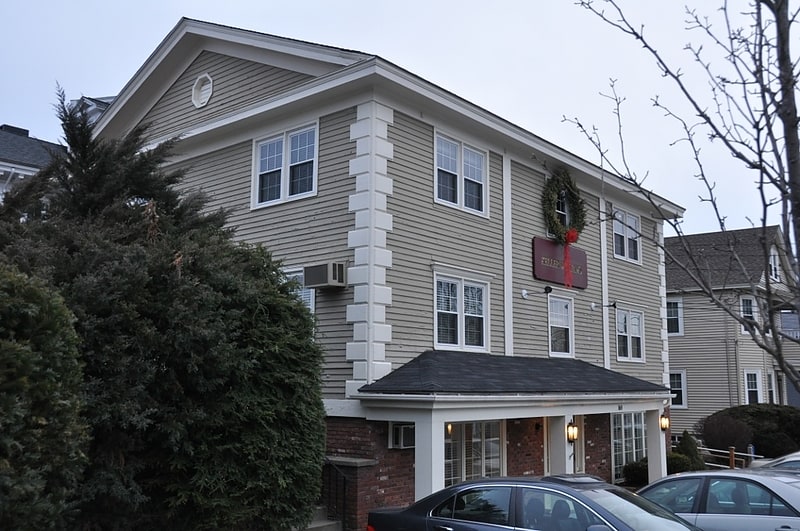
Building in Andover, Massachusetts. The Nathan Frye House is a historic house in Andover, Massachusetts. The large mansion was built in 1851-52 for Nathan Frye, who had recently become president of the Marland Mill Company, one of Andover's major textile firms. It features grand Italianate details, including bracketed eaves, corner quoins, and pedimented gables. The building and its associated carriage house have been extensively altered for commercial purposes in the late 20th century, but much of the architectural interest has been retained.
The house was listed on the National Register of Historic Places in 1982.[18]
William Foster House

The William Foster House is a historic house in Andover, Massachusetts. The core of this house is a three-bay two-story late First Period structure built c. 1720. It was added onto about 1750, adding a two-story one-room ell to the southwest corner of the house. A new chimney core was added on the north side late in the 18th century, and a second two-story wing was added on the northwest. Although the house is traditionally dated to c. 1660, the stylistic construction techniques indicate a later construction date.
The house is also notable for housing a boys' school in the later years of the 18th century, operated by William Foster for students who could not qualify for Phillips Academy. It was listed on the National Register of Historic Places in 1990.[19]
Osgood Farm

Osgood Farm is a historic farmhouse in Andover, Massachusetts.[20]